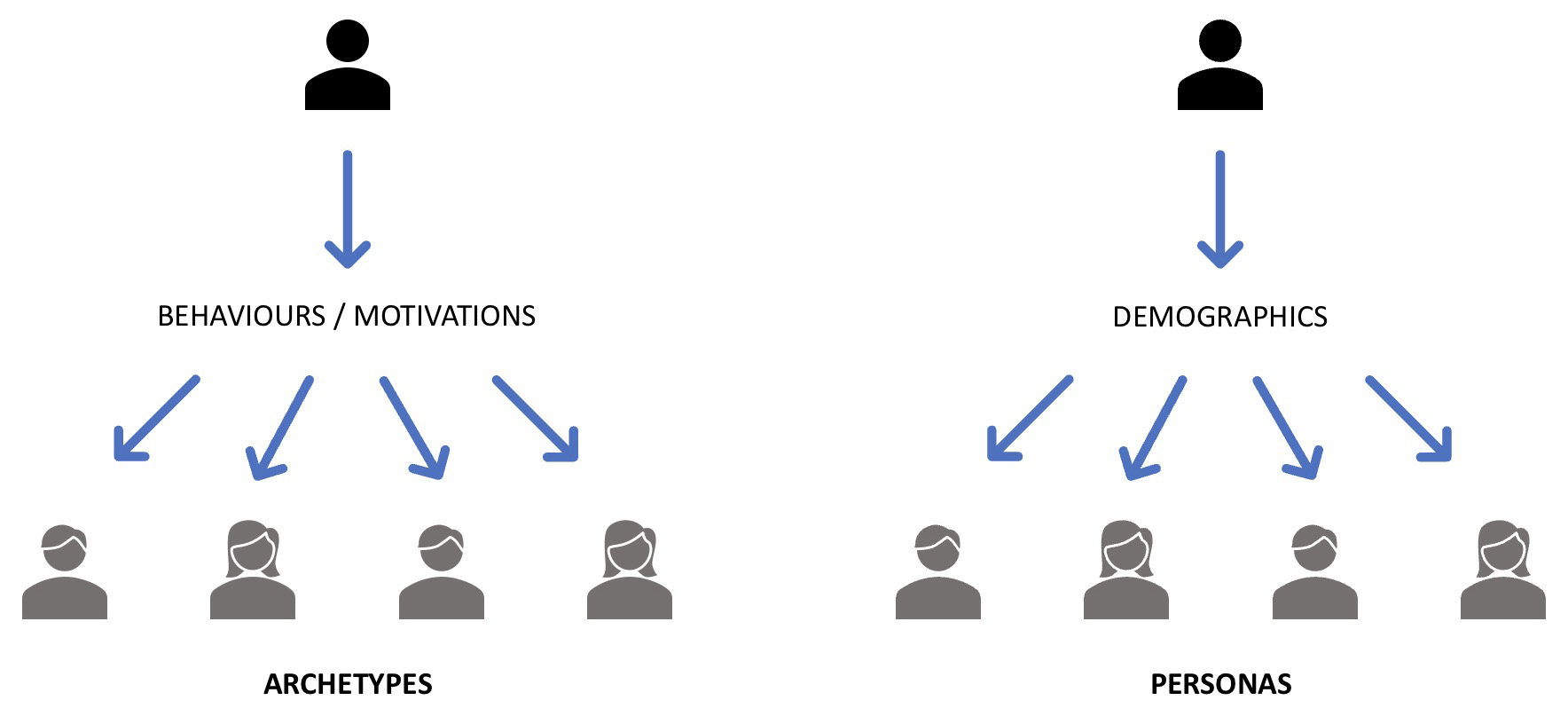When product design and marketing collide.
It’s now standard practice to design products and services from the customer’s perspective; using a framework like Jobs to be Done to understand their needs, wants, motivations, or pain points and innovating to better serve the customer.
An obvious starting point for much of this work is to survey customers and synthesise the insights into customer portraits. These (usually one page) portraits contain a set of characteristics to help designers discuss and debate requirements, features, and implementation options. Sometimes this work informs marketing activity, pricing, or retention strategies.
I’ve found a specific problem arises when multiple teams develop and apply these portraits: confusion over the creation and usage of customer archetypes versus customer personas. The two vary in purpose and usefulness throughout a product / service’s lifecycle. The team’s effectiveness and quality then suffers if they can’t talk about an artefact consistently.
I find the confusion runs in one of two ways:
- Marketing wants to re-use archetypes created by a product team
- Product teams want to re-use personas created by marketing
You can’t design for someone who’s 28 and has a portfolio of £100k - this doesn’t tell you anything about potential service delighters. Likewise, you can’t directly target someone’s motivations and you’ll end up relying on broad brand advertising.
So my definitions are as follows.
Archetypes are research-led portraits that describe the motivation, behaviours, and potential pain points for a range of users. The user types aren’t defined by existing data; instead they represent a range of potential or known extreme user types, e.g. Uber may identify users who commute daily vs. weekend break travellers. The users may share several underlying needs (transport) but for differing motivational reasons (efficiency and certainty vs. exploration and comfort). A business may be able to segment its customer base using transactional data they’ve generated but may find it near impossible to target non-customers based on the archetypes’ attributes. The attributes could be inferred through data but customers likely won’t self-declare their archetypal group. Ultimately, archetypes enable product / service design but not marketing activities.
On the other hand, personas are data-backed portraits that summarise several group characteristics, such as their age, disposable income, location, occupation, brand affinity. An important distinction is that the characteristics can be targeted using available data-points or marketing tools. In the example, Uber may identify high net worth metropolitan couples vs. a solo student travelling on a gap year. Both of these groups are accessible through data or marketing tools (using age, income, zip / postcode, occupation) and this segmentation can be applied to current and prospective customers. Personas enable go-to-market activities, like marketing campaigns or pricing, but don’t effectively support product / service design.

I’m often working as a service designer or product owner. I therefore like to include specific motivations and behaviours, rather than demographic data or “story fillers” like age, occupation. These archetypal attributes give me a problem space to work within and a much more tangible target user. I can then lean upon Jobs to be Done or similar to drive product decision making.
If you’ve found your team or company to become frustrated by sub-optimal marketing outcomes or they are going in circles on product decisions, bringing clarity to the purpose of your customer research and the framing of the output should at a minimum give each team a clearer direction.
THe best case scenario is that you’ll build your archetypes based on behaviours and motivations to undertake product / service design and, following this work, use personas to create a propositional bundle and go-to-market plan.